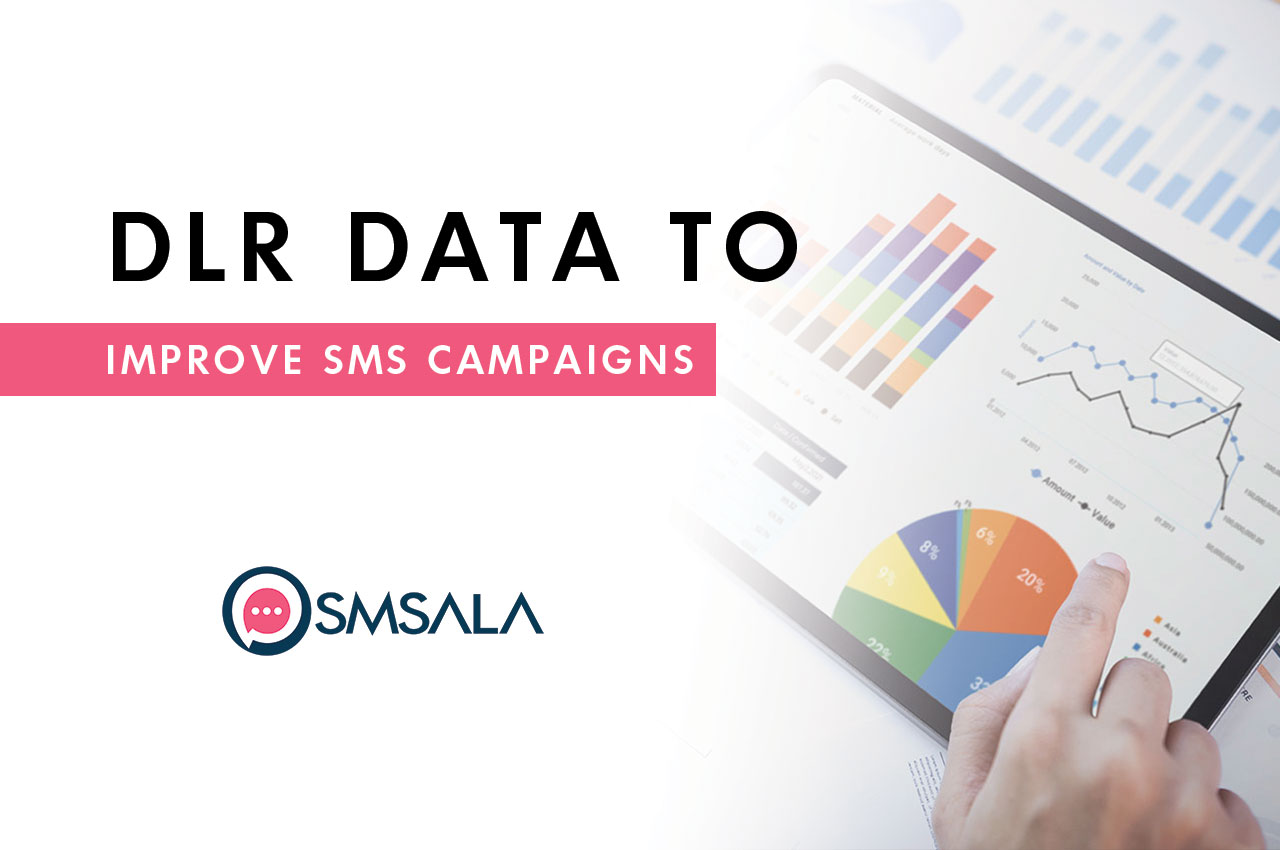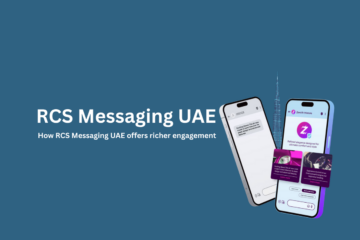In today’s digital marketing landscape, SMS campaigns have proven to be one of the most effective ways to reach customers directly on their mobile devices. With open rates as high as 98%, businesses around the world are leveraging SMS to deliver timely offers, updates, and important information to their audience. However, one key element that many marketers often overlook is the power of DLR data—Delivery Receipt data.
DLR data provides invaluable insights into the performance of SMS campaigns by tracking the status of each message, whether it’s delivered, undelivered, or failed. By properly analyzing and using this data, businesses can significantly improve their SMS campaign strategies, ensuring better delivery rates, engagement, and ultimately higher returns on investment.
In this guide, we’ll explore what DLR data is, why it’s crucial for SMS campaigns, and how to effectively use it to improve your marketing efforts. Whether you’re an experienced marketer or just starting out, this comprehensive guide will provide actionable insights to help you leverage DLR data to take your SMS campaigns to the next level.
What is DLR Data and Why Is It Important for SMS Campaigns?
DLR data, or Delivery Receipt data, refers to the information that confirms the status of an SMS message after it’s sent. This data reveals whether a message has been delivered successfully to the recipient’s device, failed to reach them, or is still pending. DLR data offers a detailed report of each SMS’s journey, allowing marketers to monitor the success of their campaigns in real-time.
Why is DLR data important? The success of SMS campaigns hinges on the delivery of messages. If your messages are not reaching their intended recipients, you’re not just losing engagement—you’re losing money. With DLR data, you can:
- Measure the effectiveness of your campaigns by analyzing the percentage of messages delivered successfully.
- Identify issues in the delivery process, such as network problems or incorrect phone numbers.
- Optimize future campaigns by making data-driven decisions based on past performance.
By utilizing DLR data effectively, you can reduce inefficiencies, improve message delivery rates, and make informed adjustments to your SMS campaigns.
Key Metrics to Track in DLR Data Analysis
To make the most of DLR data, it’s important to understand the key metrics that should be tracked. Each of these metrics gives specific insights into the health and performance of your SMS campaigns.
Delivery Rate
Delivery rate is one of the most basic yet essential metrics in DLR data analysis. It tells you the percentage of messages that were successfully delivered to the recipient’s mobile device. A high delivery rate indicates that your messages are reaching your audience effectively, while a low delivery rate suggests issues that need addressing, such as incorrect phone numbers or network problems.
Failure Rate
The failure rate represents the percentage of messages that were not delivered due to various reasons, such as invalid numbers, network congestion, or temporary mobile service disruptions. Tracking this metric helps identify common obstacles that prevent messages from reaching recipients, allowing you to fix errors in your messaging lists or work with your SMS provider to address technical issues.
Latency
Latency refers to the time it takes for an SMS message to be delivered after it’s sent. High latency can negatively affect time-sensitive messages, such as flash sales or OTP (One-Time Password) verifications. By monitoring latency data, you can ensure that your messages are delivered promptly, allowing you to optimize sending times for better engagement.
Final Status Codes
DLR data includes status codes that provide detailed information on the outcome of each SMS. Common status codes include “Delivered,” “Failed,” and “Undeliverable.” By understanding what each code means, you can diagnose delivery issues more effectively. For example, a “Failed” status may indicate that the recipient’s phone is turned off, while an “Undeliverable” status might suggest an invalid phone number.
How to Use DLR Data to Optimize SMS Campaign Strategy
Analyzing DLR data is only valuable if you apply the insights gained to your SMS marketing strategy. Here are some actionable ways to leverage DLR data to improve your campaigns:
Improving Delivery Rates by Analyzing Failed Messages
One of the most useful aspects of DLR data is the ability to spot patterns in message failures. If a significant percentage of messages are failing, review the reasons behind these failures. For example, invalid numbers can be a major issue, especially if your contact list is outdated. Regularly cleaning your list by removing or updating invalid numbers will drastically improve your delivery rates and increase overall campaign effectiveness.
Tailoring Campaign Timing Based on DLR Feedback
Timing is crucial in SMS marketing. If you notice that your messages are consistently delayed or delivered during off-hours, this could hurt engagement. DLR data can help you determine the optimal times to send messages, ensuring they are delivered and read when your audience is most likely to engage. By adjusting your campaign timing, you can improve response rates and maximize the impact of your SMS campaigns.
Cleaning Up Your Contact List Using DLR Data
An outdated contact list is one of the leading causes of failed SMS messages. Use DLR data to identify and remove invalid or inactive numbers from your contact list. This will not only improve your delivery rate but also save costs by reducing the number of undeliverable messages. Regularly updating and cleaning your list is essential for maintaining a healthy SMS marketing database.
Segmenting Audiences Based on Delivery Performance
DLR data allows you to segment your audience based on message delivery performance. For example, you can create segments for users who consistently receive messages and engage with them, as well as for users whose messages frequently fail. By tailoring your messaging and offers based on these segments, you can create more personalized campaigns that resonate with your audience and drive better results.
Common Challenges in DLR Data Interpretation and How to Overcome Them
While DLR data offers valuable insights, interpreting it can be challenging. Here are some common issues marketers face and how to overcome them:
Inconsistent Delivery Reports Across Networks
Different mobile networks handle DLR reporting differently, which can lead to inconsistencies in the data you receive. Some networks may provide detailed status reports, while others may offer only basic information. To address this, work closely with your SMS provider to ensure you’re receiving the most accurate and comprehensive DLR reports possible.
Missing or Incomplete DLR Data
Sometimes, DLR data may be missing or incomplete due to network issues, technical problems, or insufficient reporting from the carrier. If this happens frequently, it’s essential to contact your SMS provider to identify the root cause. Ensuring a reliable SMS provider with strong network connections can minimize these issues.
Handling Non-Delivery Reasons
Understanding the specific reasons for message failures is key to improving future campaigns. DLR data can provide insights into whether messages failed due to incorrect numbers, network problems, or other issues. By addressing these non-delivery reasons—whether by cleaning up your contact list or working with your SMS provider to resolve technical issues—you can significantly improve your campaign performance.
Best Practices for Leveraging DLR Data in SMS Campaigns
To make the most of DLR data, follow these best practices:
Regularly Monitor DLR Reports
Establish a consistent routine for reviewing your DLR data after each campaign. This will help you stay on top of any issues that arise and give you real-time insights into your SMS delivery performance. Regular monitoring ensures that you’re able to make immediate adjustments and improvements to your strategy.
Use Automation Tools for DLR Data Analysis
Many SMS platforms offer automation tools that can analyze DLR data for you, streamlining the process and saving you time. By using these tools, you can quickly identify trends, address issues, and optimize future campaigns without manually sifting through raw data. Automation tools can also provide detailed reports that make it easier to share insights with your team.
Incorporate DLR Data Insights into Campaign Planning
DLR data shouldn’t just be an afterthought—it should be an integral part of your campaign planning process. Use the insights gained from previous campaigns to refine your messaging, timing, and audience segmentation. By proactively incorporating DLR data into your planning, you can ensure that each campaign is more effective than the last.
Integrate DLR Data with A/B Testing
A/B testing is a powerful way to optimize your SMS campaigns. By integrating DLR data into your A/B tests, you can determine which message formats, content, or timings lead to better delivery rates and engagement. Over time, this testing process will help you fine-tune your strategy for maximum effectiveness.
Advanced Techniques for Improving SMS Campaign ROI Using DLR Data
For businesses looking to take their SMS campaigns to the next level, advanced DLR data techniques can drive even greater returns.
Predictive Analytics and DLR Data
By analyzing historical DLR data, you can predict potential delivery issues before they happen. For example, if a particular phone number or network consistently fails to deliver messages, you can address the issue in advance, ensuring a smoother campaign execution.
Enhancing Message Personalization Using DLR Insights
Personalization is key to driving engagement in SMS campaigns. By using DLR data to track which messages perform best with specific segments of your audience, you can refine your personalization strategies. This could involve tailoring offers, adjusting messaging tone, or experimenting with different delivery times for maximum impact.
Dynamic Campaign Adjustments Based on DLR Data
One of the biggest advantages of real-time DLR data is the ability to make dynamic adjustments to your campaign as it’s running. If you notice that messages are failing in a particular region or on a specific network, you can adjust your strategy mid-campaign to improve results.
FAQs: Maximizing SMS Campaign Performance with DLR Data
What is the difference between DLR and delivery status?
DLR refers to the detailed information about the final status of an SMS (delivered, failed, etc.), while delivery status is a broader term that indicates whether a message was delivered or not. DLR provides deeper insights into why a message may not have been delivered.
How can I ensure that I receive accurate DLR reports?
Work with a reliable SMS provider that has strong carrier relationships and network coverage. This will help you receive more accurate and comprehensive DLR reports.
What are the most common reasons for message delivery failures?
Common reasons include invalid phone numbers, network congestion, temporary service outages, and carrier restrictions. Regularly updating your contact list and monitoring DLR data can help reduce these failures.
Can I improve my delivery rates with better DLR tracking?
Yes. By analyzing DLR data, you can identify the causes of delivery failures and take action to improve your rates. This might include updating contact information, optimizing message timing, or working with your SMS provider to address technical issues.
How do different networks affect DLR data?
Some mobile networks provide more detailed DLR data than others. Inconsistent reporting across networks can make it difficult to get a complete picture of your SMS performance. Collaborating with your SMS provider can help mitigate these discrepancies.
Conclusion: Turn DLR Data Into Actionable Insights for SMS Campaign Success
DLR data is an invaluable tool for improving the effectiveness of your SMS campaigns. By monitoring key metrics, optimizing your strategy, and addressing common delivery challenges, you can significantly increase your message delivery rates, improve engagement, and boost your overall campaign ROI.
Now that you have a better understanding of how to use DLR data to enhance your SMS campaigns, it’s time to put these insights into action. Start by analyzing your current DLR data and identify areas for improvement. Remember, each campaign is an opportunity to learn and refine your strategy. With the right approach, you’ll see improved results in no time.
For more tips on SMS marketing and maximizing campaign performance, be sure to check out our other articles or get in touch with our team of experts.




